Refine search
Actions for selected content:
5849 results in Programming Languages and Applied Logic
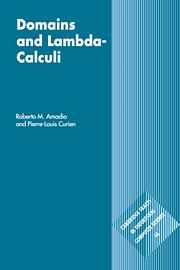
Domains and Lambda-Calculi
-
- Published online:
- 05 November 2011
- Print publication:
- 02 July 1998
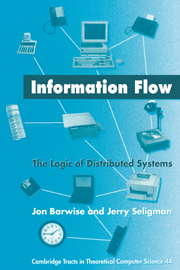
Information Flow
- The Logic of Distributed Systems
-
- Published online:
- 05 November 2011
- Print publication:
- 28 July 1997
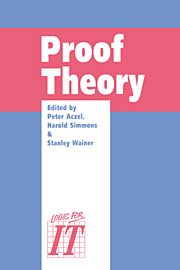
Proof Theory
- A selection of papers from the Leeds Proof Theory Programme 1990
-
- Published online:
- 05 November 2011
- Print publication:
- 11 February 1993
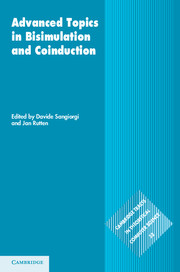
Advanced Topics in Bisimulation and Coinduction
-
- Published online:
- 05 November 2011
- Print publication:
- 13 October 2011
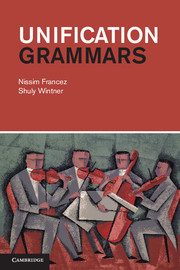
Unification Grammars
-
- Published online:
- 25 October 2011
- Print publication:
- 30 September 2011
7 - Probabilistic bisimulation
-
-
- Book:
- Advanced Topics in Bisimulation and Coinduction
- Published online:
- 05 November 2011
- Print publication:
- 13 October 2011, pp 290-326
-
- Chapter
- Export citation
1 - Towards bisimulation
-
- Book:
- Introduction to Bisimulation and Coinduction
- Published online:
- 05 August 2012
- Print publication:
- 13 October 2011, pp 11-27
-
- Chapter
- Export citation
Preface
-
-
- Book:
- Advanced Topics in Bisimulation and Coinduction
- Published online:
- 05 November 2011
- Print publication:
- 13 October 2011, pp xi-xiv
-
- Chapter
- Export citation
Index
-
- Book:
- Introduction to Bisimulation and Coinduction
- Published online:
- 05 August 2012
- Print publication:
- 13 October 2011, pp 244-247
-
- Chapter
- Export citation
Frontmatter
-
- Book:
- Introduction to Bisimulation and Coinduction
- Published online:
- 05 August 2012
- Print publication:
- 13 October 2011, pp i-iv
-
- Chapter
- Export citation
7 - Basic observables
-
- Book:
- Introduction to Bisimulation and Coinduction
- Published online:
- 05 August 2012
- Print publication:
- 13 October 2011, pp 182-198
-
- Chapter
- Export citation
5 - Howe's method for higher-order languages
-
-
- Book:
- Advanced Topics in Bisimulation and Coinduction
- Published online:
- 05 November 2011
- Print publication:
- 13 October 2011, pp 197-232
-
- Chapter
- Export citation
Preface
-
- Book:
- Introduction to Bisimulation and Coinduction
- Published online:
- 05 August 2012
- Print publication:
- 13 October 2011, pp xi-xii
-
- Chapter
- Export citation
List of illustrations
-
- Book:
- Introduction to Bisimulation and Coinduction
- Published online:
- 05 August 2012
- Print publication:
- 13 October 2011, pp ix-x
-
- Chapter
- Export citation
List of contributors
-
- Book:
- Advanced Topics in Bisimulation and Coinduction
- Published online:
- 05 November 2011
- Print publication:
- 13 October 2011, pp viii-x
-
- Chapter
- Export citation
Contents
-
- Book:
- Advanced Topics in Bisimulation and Coinduction
- Published online:
- 05 November 2011
- Print publication:
- 13 October 2011, pp v-vii
-
- Chapter
- Export citation
4 - Bisimulation and logic
-
-
- Book:
- Advanced Topics in Bisimulation and Coinduction
- Published online:
- 05 November 2011
- Print publication:
- 13 October 2011, pp 173-196
-
- Chapter
- Export citation
List of notation
-
- Book:
- Introduction to Bisimulation and Coinduction
- Published online:
- 05 August 2012
- Print publication:
- 13 October 2011, pp 231-234
-
- Chapter
- Export citation
6 - Refinements of simulation
-
- Book:
- Introduction to Bisimulation and Coinduction
- Published online:
- 05 August 2012
- Print publication:
- 13 October 2011, pp 168-181
-
- Chapter
- Export citation
5 - Other approaches to behavioural equivalences
-
- Book:
- Introduction to Bisimulation and Coinduction
- Published online:
- 05 August 2012
- Print publication:
- 13 October 2011, pp 133-167
-
- Chapter
- Export citation
